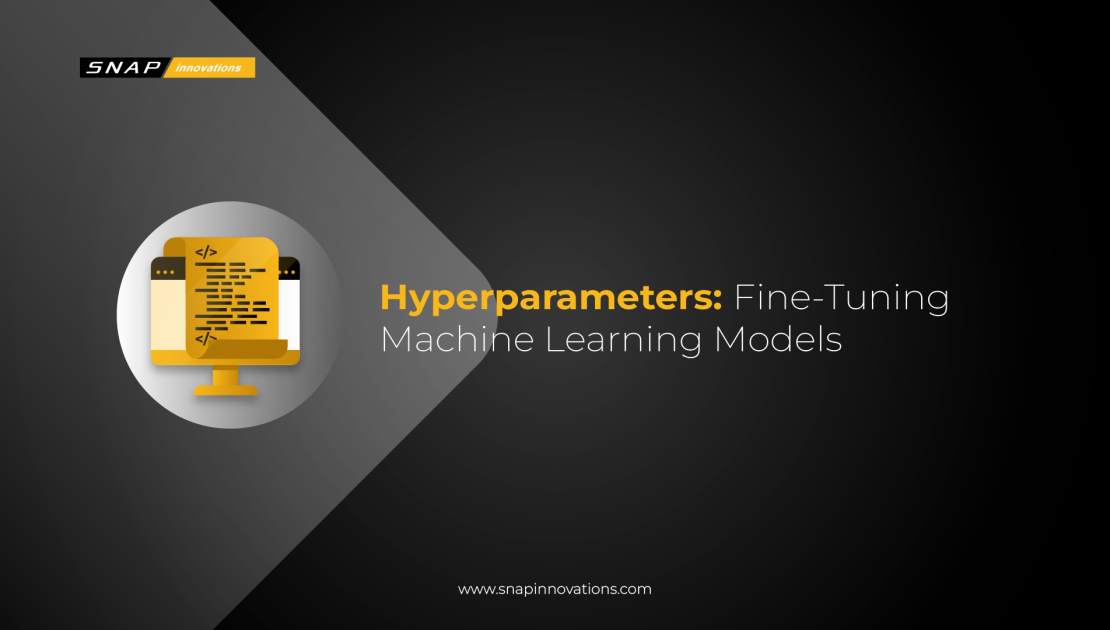Machine learning has revolutionized the way we approach complex problems in various domains. From image recognition to natural language processing, machine learning models have exhibited remarkable capabilities.
However, their performance heavily relies on a crucial element often overshadowed by the algorithms themselves: hyperparameters. In this article, we delve into the world of hyperparameters, exploring what they are, why they matter, and how they can be fine-tuned to optimize machine learning models.
What is Hyperparameters?
Hyperparameters are essential components of machine learning models. Unlike parameters, which are learned during training (such as weights and biases), hyperparameters are predetermined settings that guide the learning process. They act as configurations for the algorithm, affecting its behavior and performance.
Hyperparameters can vary from one machine learning algorithm to another but often include settings like the learning rate, the number of hidden layers in a neural network, the depth of a decision tree, and the regularization strength. Choosing the right hyperparameters is critical because it can be the difference between a model that performs exceptionally well and one that struggles to make accurate predictions.
Selecting appropriate hyperparameters is crucial for achieving optimal model performance. Poor choices of hyperparameters can result in underfitting (the model is too simple and cannot capture the underlying patterns in the data) or overfitting (the model is too complex and learns the noise in the data). Therefore, hyperparameter tuning, which involves systematically selecting and optimizing these hyperparameters, is an essential step in the machine learning pipeline to ensure that the model performs well on unseen data.
In essence, hyperparameters serve as the knobs and dials that data scientists and machine learning engineers tweak to fine-tune a model’s behavior. Optimizing hyperparameters is a crucial step in the model development process, as it can significantly impact a model’s predictive power.
The Significance of Hyperparameters
The significance of hyperparameters becomes apparent when we consider the diverse nature of datasets and machine learning tasks. There is no one-size-fits-all setting for hyperparameters; what works well for one problem may not work for another. This is where the art of hyperparameter tuning comes into play.
Hyperparameter tuning involves a systematic approach to finding the optimal hyperparameters for a given machine learning task. This process can be time-consuming and often requires experimentation, but the rewards are substantial. Properly tuned hyperparameters can lead to faster convergence during training, better generalization to unseen data, and ultimately, improved model performance.
The choice of hyperparameters is not arbitrary. It requires a deep understanding of the specific problem, the dataset, and the underlying machine learning algorithm. For example, in a deep learning model, selecting an appropriate learning rate can mean the difference between rapid convergence and getting stuck in a suboptimal solution.
Machine learning practitioners employ various techniques for hyperparameter tuning, such as grid search, random search, and Bayesian optimization. These methods help automate the process of exploring different hyperparameter combinations to find the best settings for a model.
8 Strategies for Hyperparameter Tuning
 1. Grid Search
1. Grid Search
Grid search is a systematic approach that involves specifying a range of values for each hyperparameter and evaluating all possible combinations. While it can be exhaustive, it ensures that no promising combination is overlooked. Grid search can become very time-consuming and computationally expensive, especially when dealing with numerous hyperparameters or wide ranges of values.
However, it provides a comprehensive exploration of the hyperparameter space, which can be crucial for finding the best model performance. It’s often used as a baseline approach for hyperparameter tuning, and its simplicity makes it a good starting point.
Also Read: Paper Trading: Mastering the Markets Risk-Free
2. Random Search
Random search, on the other hand, takes a different approach by randomly sampling hyperparameters from predefined distributions. This method can be more efficient than grid search because it doesn’t exhaustively evaluate all combinations. Instead, it focuses on exploring areas of the hyperparameter space where good configurations are more likely to be found.
Random search is particularly beneficial when there are many hyperparameters to tune, as it reduces the computational cost compared to grid search. However, it relies on chance to find the best hyperparameters, and there’s no guarantee of finding the absolute optimum.
3. Bayesian Optimization
Bayesian optimization is an intelligent strategy that employs probabilistic models to predict the performance of different hyperparameter combinations. It actively explores promising regions of the hyperparameter space while avoiding areas where poor performance is expected. This makes Bayesian optimization highly efficient and suitable for scenarios where the evaluation of hyperparameter configurations is costly, such as deep learning.
By building a surrogate model of the objective function and using acquisition functions like Probability of Improvement (PI) or Expected Improvement (EI), Bayesian optimization guides the search towards better configurations, making it a powerful method for hyperparameter tuning.
4. Cross-Validation
Cross-validation is a fundamental technique for hyperparameter tuning. It involves splitting the dataset into multiple subsets, often referred to as folds, and using each fold for both training and validation. This helps estimate how well a model will generalize to unseen data and prevents overfitting.
Cross-validation is essential because it provides a robust evaluation of different hyperparameters’ performance across various data samples. Common cross-validation techniques include k-fold cross-validation, stratified cross-validation, and leave-one-out cross-validation, each with its advantages depending on the dataset and problem at hand.
5. Early Stopping
Early stopping is a regularization technique used during the training of machine learning models. It monitors the model’s performance on a validation dataset and stops training when the performance starts deteriorating, indicating overfitting.
By preventing the model from becoming overly complex and fitting the noise in the training data, early stopping helps find better generalizable hyperparameters. It’s a valuable strategy, especially for deep learning models, where overfitting is a common challenge.
6. Ensemble Methods
Ensemble methods involve combining the predictions of multiple models, each with different hyperparameters, to improve overall performance. Techniques like stacking, bagging, and boosting can be used to create ensemble models. Ensemble methods are effective because they leverage the diversity of individual models to reduce bias and variance, resulting in better predictive accuracy.
Hyperparameter tuning for ensemble methods often focuses on optimizing the hyperparameters of the base learners and the ensemble’s parameters, such as the learning rate in boosting.
7. Parallelization
To speed up hyperparameter tuning, parallelization can be employed. Many libraries and cloud platforms offer parallelization support, allowing you to explore multiple hyperparameter configurations simultaneously.
This can significantly reduce the time required for hyperparameter tuning, especially when you have access to multiple compute resources. Parallelization is a practical strategy when you need to perform extensive searches in complex hyperparameter spaces.
8. Regularization
Regularization techniques like L1 and L2 regularization can be essential for preventing overfitting caused by aggressive hyperparameter tuning. These techniques add penalties to the model’s loss function, discouraging overly complex models.
When hyperparameter tuning leads to models with high capacity and a risk of overfitting, regularization can help strike a balance between model complexity and generalization performance. It’s an important consideration, particularly when tuning hyperparameters related to model architecture or complexity.
These strategies provide a comprehensive toolkit for machine learning practitioners to efficiently explore the hyperparameter space and find the optimal settings for their models. Each approach has its strengths and weaknesses, and the choice of strategy often depends on the specific problem, available resources, and desired trade-offs between computation time and model performance.
Challenges in Hyperparameter Tuning
 Navigating the terrain of hyperparameter tuning is not without its challenges. As machine learning models become more complex, the search space for optimal hyperparameters expands exponentially. This complexity can lead to extensive computational demands, requiring substantial time and resources. Additionally, there’s the issue of overfitting, where fine-tuning hyperparameters on a specific dataset may inadvertently result in a model that performs exceptionally well on that data but struggles with generalization to new, unseen data.
Navigating the terrain of hyperparameter tuning is not without its challenges. As machine learning models become more complex, the search space for optimal hyperparameters expands exponentially. This complexity can lead to extensive computational demands, requiring substantial time and resources. Additionally, there’s the issue of overfitting, where fine-tuning hyperparameters on a specific dataset may inadvertently result in a model that performs exceptionally well on that data but struggles with generalization to new, unseen data.
Moreover, striking the right balance between exploring different hyperparameters and exploiting promising settings is a delicate task, often requiring multiple iterations. Furthermore, the sensitivity of hyperparameters to one another can make it challenging to pinpoint the exact combination that yields optimal results. Addressing these challenges necessitates a systematic approach, efficient optimization algorithms, and robust cross-validation techniques to ensure that your tuned model performs reliably in real-world scenarios.
Lastly, hyperparameter tuning is an ongoing task. As new data becomes available or the problem evolves, the optimal hyperparameters for your model may change. Therefore, it’s essential to regularly revisit and re-optimize hyperparameters to ensure that your machine learning model continues to perform optimally in dynamic environments. Balancing all these challenges requires careful planning, experimentation, and a keen understanding of your specific machine learning problem.
Best Practices for Hyperparameter Tuning
 Optimizing hyperparameters is a nuanced task that requires a combination of best practices and practical experience. Here are some best practices to consider when approaching hyperparameter tuning:
Optimizing hyperparameters is a nuanced task that requires a combination of best practices and practical experience. Here are some best practices to consider when approaching hyperparameter tuning:
1. Start with a Reasonable Default
Before diving into hyperparameter tuning, it’s essential to begin with a set of default hyperparameters that are known to work reasonably well for your specific machine learning algorithm. These defaults often come from best practices in the field or prior experiences.
Starting with reasonable defaults can save you time and computational resources, as they can serve as a solid foundation to build upon. Additionally, using default values can help identify whether hyperparameter tuning is necessary. If the default hyperparameters already provide satisfactory results, extensive tuning may not be required.
2. Define a Clear Objective
Clearly define your optimization objective before starting the hyperparameter tuning process. Ask yourself whether you’re aiming to maximize accuracy, minimize error, optimize for a specific metric, or balance trade-offs between multiple metrics.
Having a well-defined goal will guide your tuning efforts and help you prioritize which hyperparameters to focus on. Defining a specific metric allows you to fine-tune hyperparameters to achieve the desired balance.
3. Log and Monitor Experiments
Maintain a comprehensive log of your hyperparameter tuning experiments. Record not only the hyperparameter values but also relevant information such as dataset details, model architecture, and hardware configurations. Logging allows you to track the performance of different configurations and helps you identify patterns or trends in your results.
Additionally, consider using experiment tracking tools or frameworks to streamline this process. Tools like MLflow, TensorBoard, or dedicated experiment management platforms can simplify experiment tracking and management.
4. Explore Logarithmic Search Spaces
When searching for hyperparameter values, consider exploring logarithmic search spaces for hyperparameters that span multiple orders of magnitude. For example, learning rates, batch sizes, or regularization strengths often exhibit wide search spaces.
Conducting a logarithmic search allows you to efficiently cover a broad range of values and discover promising regions more quickly.
5. Use Validation Data Effectively
Split your dataset into training, validation, and test sets. Use the validation set to evaluate different hyperparameter configurations during tuning. It’s crucial to avoid using the test set for this purpose, as it should remain untouched until the final evaluation to ensure unbiased performance estimates.
Employ cross-validation techniques, such as k-fold cross-validation, to make the most of your data. Cross-validation provides a robust way to assess hyperparameter performance across multiple data subsets.
6. Implement Early Stopping
Incorporate early stopping into your training pipeline to prevent overfitting. Early stopping monitors the model’s performance on the validation set and halts training when performance deteriorates.
This helps prevent excessive training, which can occur if hyperparameters lead to models that are too complex. Early stopping is especially valuable when optimizing hyperparameters that affect model capacity or training duration, such as the number of layers in a deep neural network.
7. Regularize Models Adequately
Regularization techniques, such as L1 and L2 regularization, can mitigate overfitting. When tuning hyperparameters related to model complexity, consider applying appropriate regularization to ensure that the resulting models generalize well to unseen data.
Be mindful of the balance between model capacity and regularization strength. Adjust regularization hyperparameters to achieve the desired level of complexity.
8. Automate Hyperparameter Tuning
Take advantage of automated hyperparameter tuning tools and libraries, such as scikit-learn’s GridSearchCV, RandomizedSearchCV, or specialized libraries like Optuna and Hyperopt.
These tools can automate the search process, efficiently exploring the hyperparameter space and identifying optimal configurations. Automated tuning not only saves time but also ensures a more systematic and exhaustive search, improving the chances of finding the best hyperparameters.
By following these best practices, you can navigate the complexities of hyperparameter tuning effectively, leading to improved machine learning model performance and more efficient use of computational resources. Remember that hyperparameter tuning is an iterative process, and refining your approach over time can lead to better results and insights.
Also Read: Portfolio Analysis: Evaluate and Manage Your Investments
Conclusion
In conclusion, hyperparameters are integral to the success of machine learning models. Properly tuned hyperparameters can elevate a model’s performance from mediocre to exceptional.
While hyperparameter tuning can be challenging and resource-intensive, it is a critical step in the journey of mastering machine learning. By adopting systematic approaches, best practices, and a touch of experimentation, practitioners can unlock the full potential of their models.

